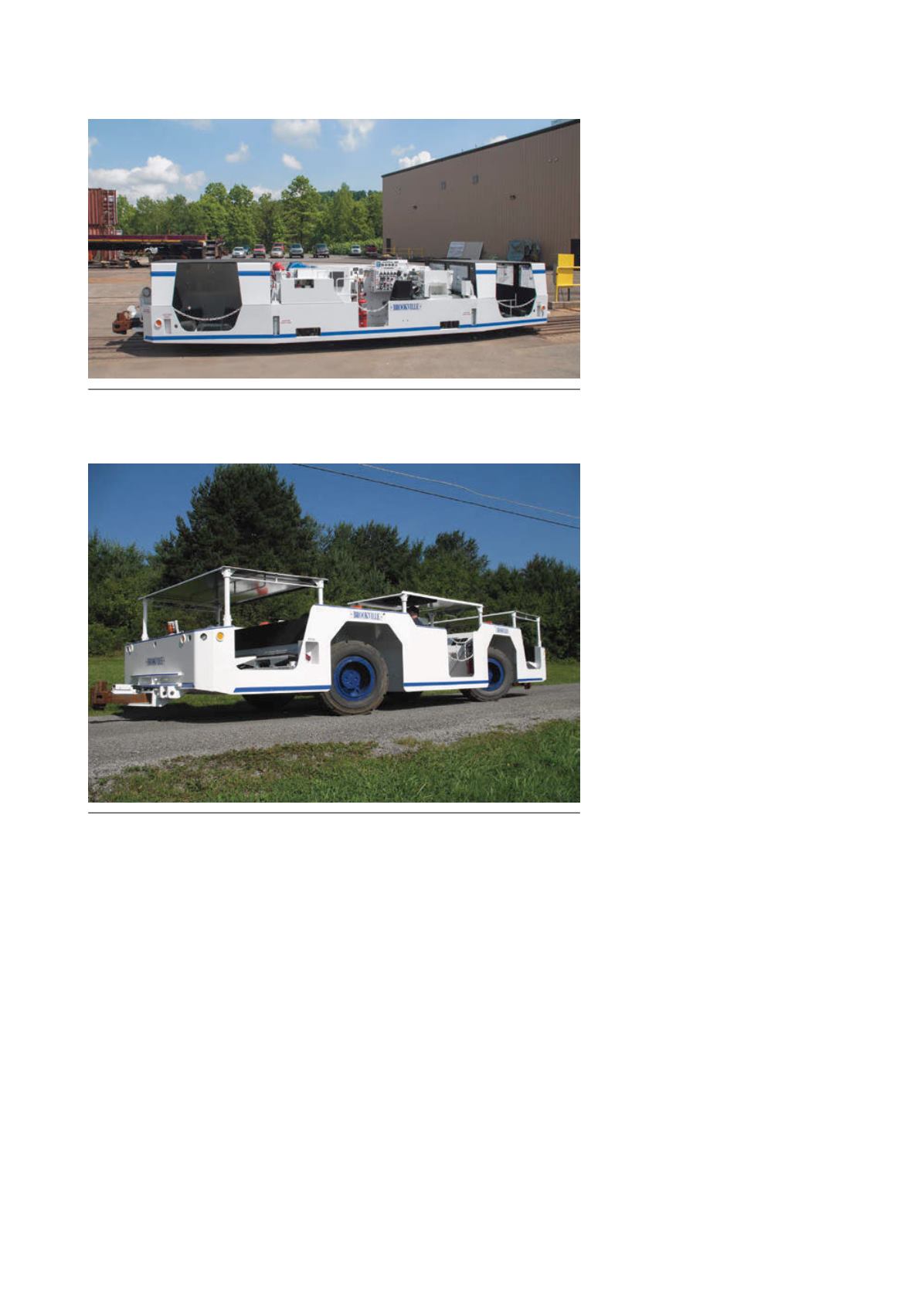
The initial units, which were
destined for the Buchanan mine of
the Consolidation Coal Co. (now
Consol Energy), featured Deutz
diesel engines, had the capacity to
haul up to six workers and doubled
as a 6 t locomotive for haulage
applications. Riding on 44 in.
(112 cm) gauge, the personnel
carriers featured a shaft drive and
were used to transport small groups
of workers, such as maintenance
crews, throughout the mine.
By the early 1990s, orders for the
new product line had increased, with
diesel versions developed to
transport up to 17 workers. From
1990 through to 1995, Brookville
shipped over 90 personnel carriers
primarily to mine sites in Alabama,
Indiana, Kentucky, Virginia, West
Virginia – and as far away as
Australia.
As orders continued to climb,
Brookville focused on product
enhancements. By 1991, the six‑person
and 10-person personnel carriers,
which were sold as a niche product in
the late 1980s, had blossomed into a
diverse product portfolio that
included a variety of features and
frame designs for mine operators to
meet dimensional requirements and
utility applications. Key upgrades
included disc braking and planetary
axles, providing more dependable
systems for moving and stopping.
One example of a popular early
model is an order of five 17-person
personnel carriers shipped to the
Oak Grove mine in Alabama. These
units featured a four-cylinder 52 hp
diesel engine and two-speed
powershift transmission. Other key
vehicle features included a
chevron suspension for a softer ride,
as well as disc braking for more
dependable stopping power.
Weighing just under 8 t empty, the
personnel carriers met the mine’s
stringent height requirements at
44 in. (112 cm).
The end compartments had the
capacity to seat up to eight workers
on each side, for a total of 16
passengers, plus an operator. A 1 in.
(2.5 cm) neoprene rubber lining was
installed on each bench‑style seat to
provide padding, while steel
overhead canopies protected workers
from debris hazards. Other safety
features included a 10 lb (4.5 kg)
Ansul fire suppression system, SCSR
(self-contained self-rescuer) boxes,
10 short t (9 t) aluminium
jack‑and‑bar rerailing equipment and
a sandbox mounted at each wheel
location. Brookville rebuilt all five
units in 2004, replacing the engine,
transmission and other key
components.
Another popular model in the
early 1990s was the 10-person
personnel carrier, which could be
designed down to a 38 in. height and
navigate tighter turns than its longer,
17-person counterpart. Featuring a
41 hp three‑cylinder engine and
two-speed powershift transmission,
this model offered similar safety
features, including a jack-and-bar
rerailing kit, 5 lb (2.27 kg) fire
extinguisher and steel overhead
canopies.
In 1995, Brookville developed
battery-powered personnel carriers
to combat more stringent
underground diesel emissions
requirements and to avoid installing
underground trolley wire. The
battery-powered personnel carriers,
which featured 30 hp GE traction
Figure 2. Brookville manufactured its first rubber-tyred personnel carriers in 1991.
The 20-person version above was developed in 2010 and can also function as a 15 t
tractor.
Figure 1. The 2015 version Brookville's popular 15-person diesel personnel carrier,
including seating for seven workers in each end compartment with a center-seated
operator.
28
|
World Coal
|
June 2015


